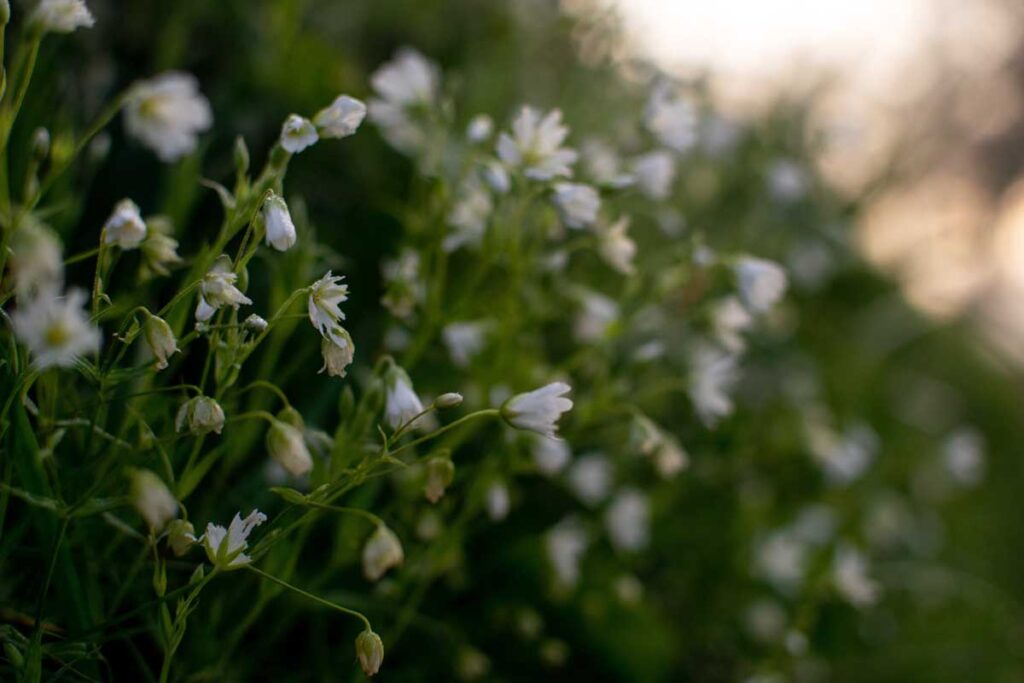Wildflowers in the Shade: Choosing the Best Species for Sowing
Sowing wildflowers is exciting, but growing them in the shade can be challenging. When selecting the right flower seeds for your shady spots, remember that some species thrive in low-light conditions better than others.
We’re here to help you find the best seed species for your project. I’ll share my expert tips on understanding where your garden falls on the light-to-shade scale, the best wildflowers for shade, and, most importantly, how to ensure those flowers are as successful as possible once planted.
Ready to bring a little colour and life to your shadiest areas? Let’s dive in!
Why Choose Wildflower Seeds for Shade?
Wildflowers are a great option to add beauty and colour to your shady outdoor spaces. Wildflowers thrive in areas with little to no direct sunlight, and their varied colours, shapes, and sizes make them ideal for adding variety to your garden.
Perhaps the most appealing thing about wildflowers is that they are relatively low-maintenance and easy to grow. They require less water than other plants, can be grown in various soil types, and are generally hardy enough to withstand changing weather conditions. Additionally, since they typically self-seed yearly, you won’t need to replant your wildflowers each season.
When choosing seed species for planting in the shade, aim for those that appreciate partial shade or filtered light rather than deep shade. Consider species such as the Oxeye daisy, columbine, bellflower, sweet woodruff, bugleweed and lupine–all of which will love the shady parts of your garden!
Best Wildflower Species for Shady Areas
Your shadows don’t have to be left without colour. You can turn your shady area into a gorgeous garden with suitable wildflower species.
When selecting wildflowers, remember that those that do best in the shade are typically annuals rather than perennials. Annuals complete their growth cycle within one season, then die off in autumn and winter. Most perennials require sun throughout the day to bloom, but there are some exceptions to this rule.
Recommended species for shady areas:
- Columbine
- Belflower
- Betony
- Foxglove
- Hedge Parsley
- Meadowsweet
- Wild Garlic
- Tufted Vetch
- Yarrow
When sowing wildflowers in the shade, always use natural soil amendments like aged manure or compost to give plants extra nutrients they’ll need for success. Additionally, make sure you water deeply and frequently for the best results.
Sowing and Caring for Wildflower Seeds in Shady Areas
If considering sowing wildflower seeds in shady areas, you must pick a suitable species. The good news is that many wildflower varieties will thrive in shade, even if they don’t get as much direct sunlight.
When choosing the suitable wildflower seed species for planting in the shade, here are a few things to keep in mind:
WildFlower Variety
Choose a flower variety that will do well in the shade. A few options include common bluebells, wood anemones and wood forget-me-nots. These flowers all do well in partial or light shade.
Wildahome, we offer combined seed mixes, specifically for shaded and woodland areas.
Soil Requirements
Please pay attention to the soil requirements of your chosen flower variety before planting it in the shade. Some flowers, for example, may require soil with higher nitrogen levels or other nutrients; this is especially important if you’re looking to plant wildflowers in pots or containers rather than directly into your garden space. In the main many species of wildflowers prefer poorer, less nutrient soils.

Seed Depth
You’ll want to ensure that you sow your seeds at the correct depth for optimal growth and health, typically between 6 and 12 millimetres deep. You may also want to cover your seeds lightly with compost or potting soil after sowing them, as this can help hold moisture and keep the seeds from moving around too much before they germinate.
Once your wildflower seedlings start growing, maintain them regularly by watering them frequently and weeding around them regularly, doing so will ensure they have plenty of room to spread out and reach their full potential!
You Don't Have to Let Your Wildlife Garden Struggle in the Shade
When planting wildflowers in the shade, the key is finding suitable species. These wildflowers can be sown in shady areas where traditional lawn turf or other ornamentals may struggle, and they can be a great way to bring some colour and life into an otherwise dark area.
Finding the suitable species for wildflower planting in shady areas may take some trial and error, but once you’ve figured it out, you’ll be rewarded with a stunning display of hardy plants that can last for years. With the right combination of soil preparation, sunlight, and water, you can create a wildflower garden in even the darkest, shadiest corner of your outdoor space.


